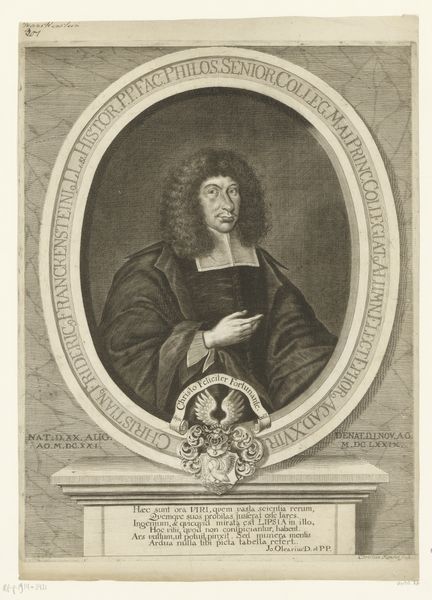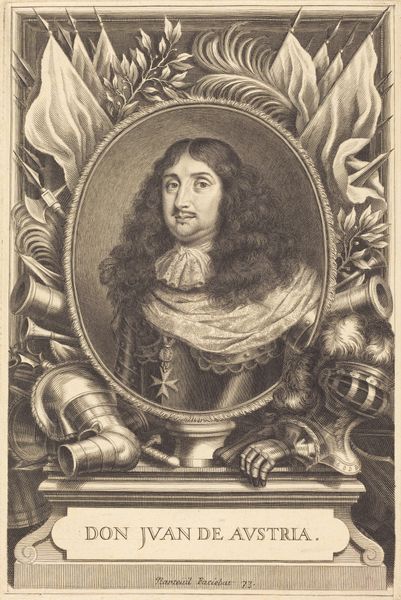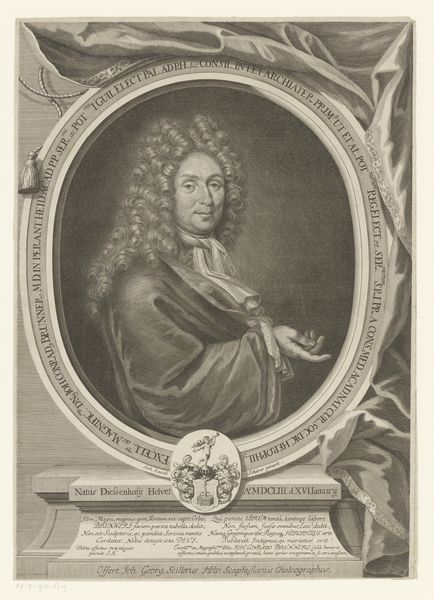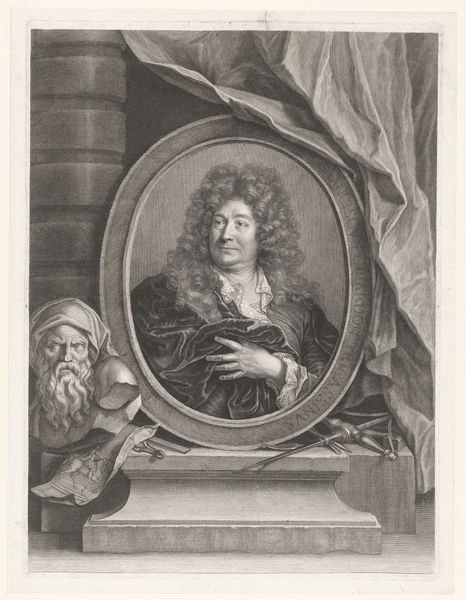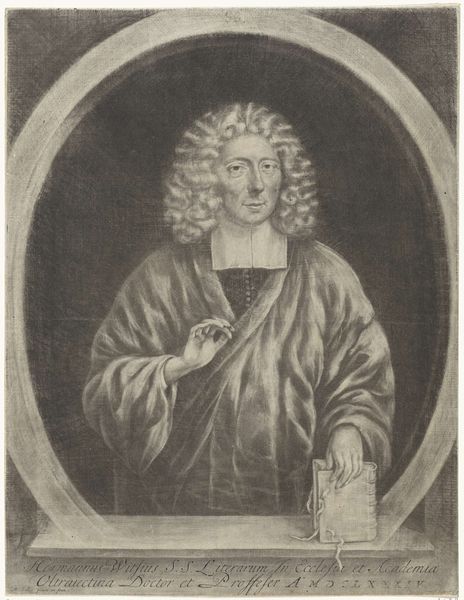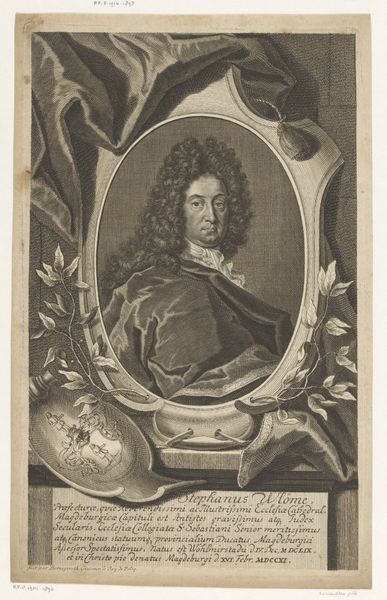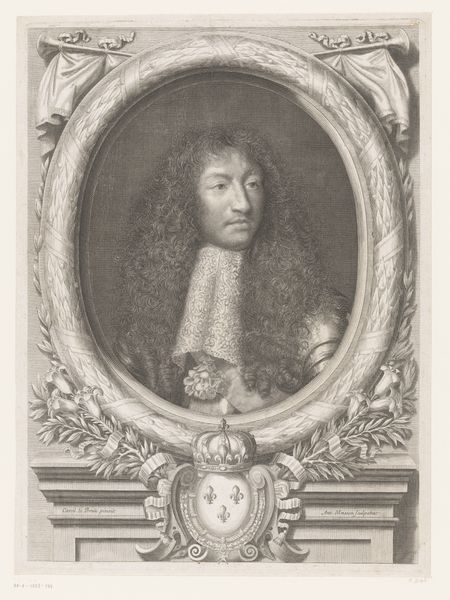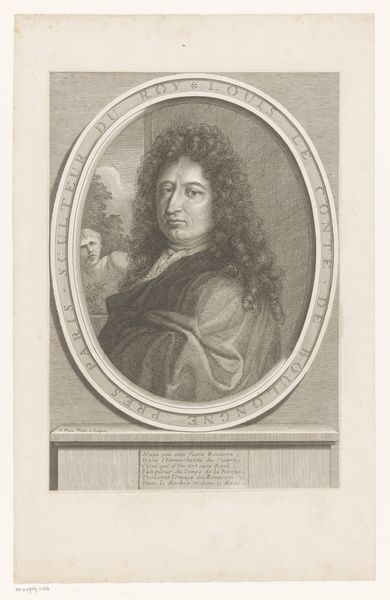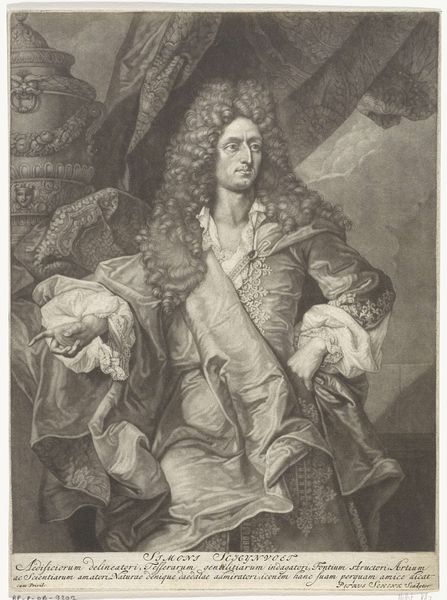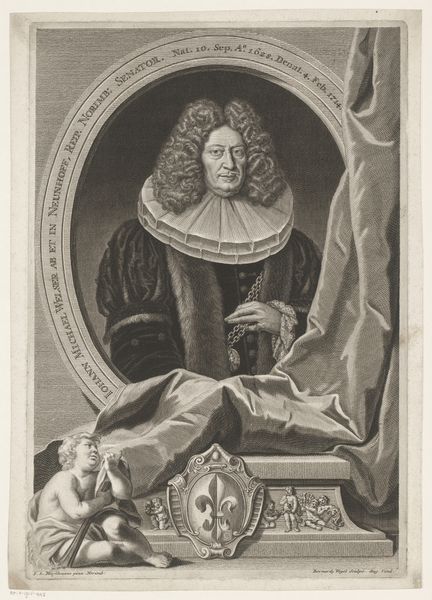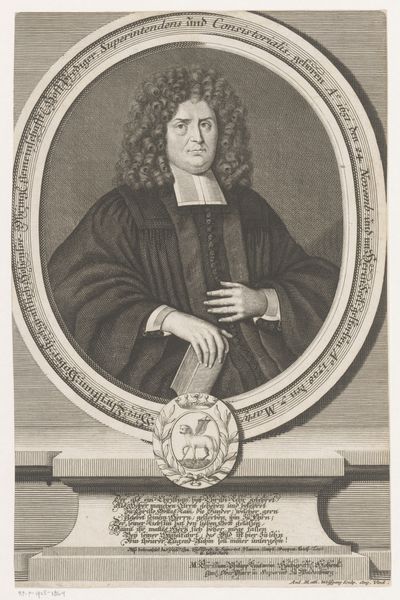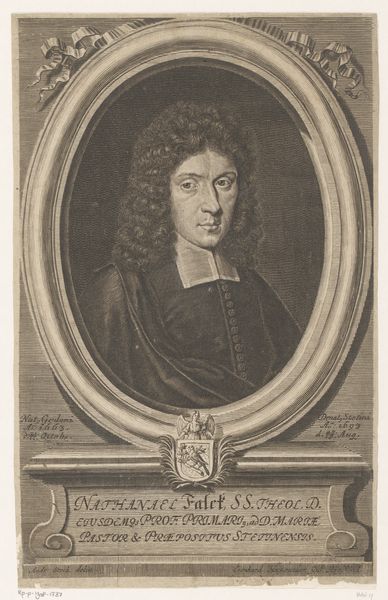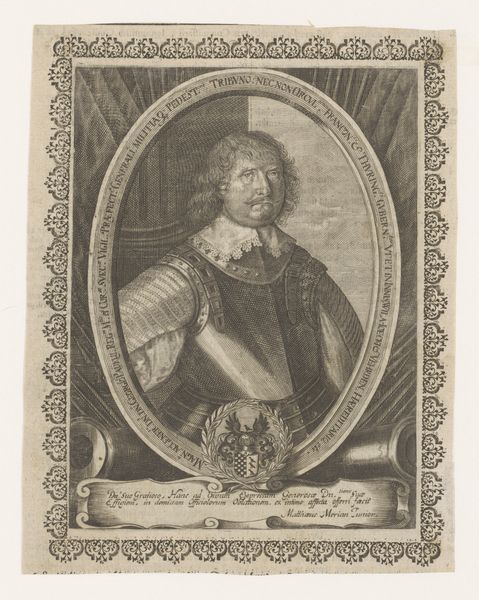
print, engraving
#
portrait
#
baroque
# print
#
caricature
#
genre-painting
#
engraving
Dimensions: plate: 35 × 25.3 cm (13 3/4 × 9 15/16 in.) sheet: 36 × 26.5 cm (14 3/16 × 10 7/16 in.)
Copyright: National Gallery of Art: CC0 1.0
Curator: Here we have a 1657 engraving by Nicolas de Plattemontagne entitled "Vincent Barthélémy." Editor: It has an immediate air of dignified solemnity; the oval frame and dark cloak give it an almost theatrical quality, like peering into a moment on stage. Curator: Indeed. The engraving demonstrates the Baroque focus on capturing dramatic effect through line and shadow. Consider how Plattemontagne employs fine, detailed lines to render the textures of the sitter’s robe and the voluminous curls of his hair. The play of light and shadow across his face adds depth and presence. Editor: Beyond the formal execution, I find myself pondering Vincent Barthélémy’s position within the societal hierarchy of his time. What was his status that merited such a portrait? How did representations like these reinforce existing power structures? Curator: Such considerations are relevant. The portrait undeniably conveys status and respectability, as evident from the intricate frame design, featuring decorative elements. It operates as a formal articulation of social standing. Editor: Precisely, the act of portrayal, and dissemination through print, enabled the subject's image and assumed virtues to be consumed within a network of power, perhaps solidifying alliances, advertising lineage, or performing piety depending on the distribution of the prints. I can't help but wonder, for instance, whether that heavy drapery signifies wealth accumulated through exploitative means, or represents an exclusionary religious group? Curator: We can certainly engage in interpretations that contextualize the portrait, as you've highlighted, it's equally viable to examine Plattemontagne’s skill as an engraver: look at the density and variety of line, the contrast that evokes a dynamic and elegant composition. Editor: The formal elements speak clearly. But what if we could, hypothetically, overlay this image with accounts of exploitation in 17th-century society, or testimonies from individuals who would have never have been the subjects of such formal commemoration? Curator: It highlights the value of different analytical lenses. This close consideration of line and texture has enriched my perspective this time. Editor: And focusing on socio-political dynamics provides the potential for viewers to actively examine representation and reception beyond just aesthetic appreciation.
Comments
No comments
Be the first to comment and join the conversation on the ultimate creative platform.
